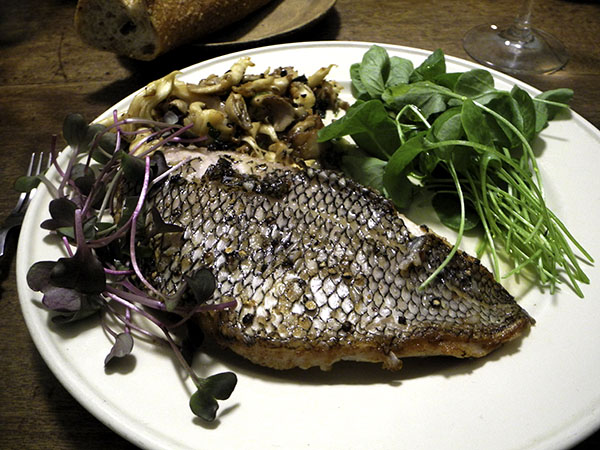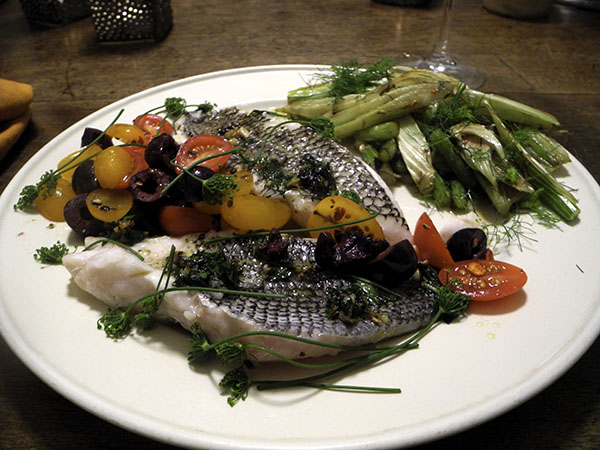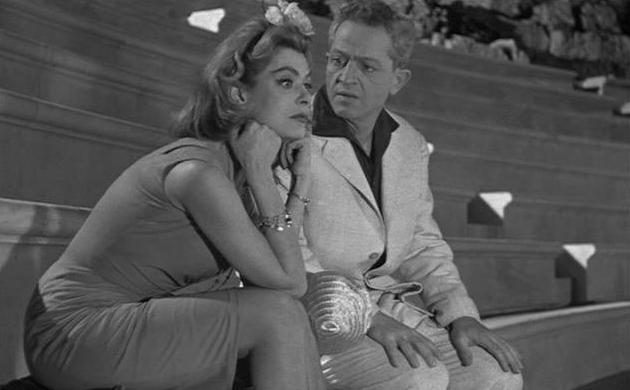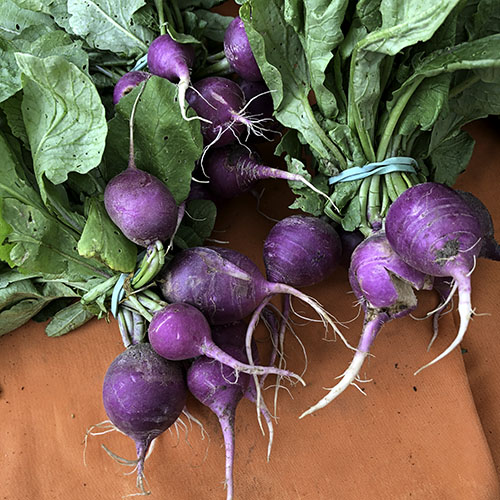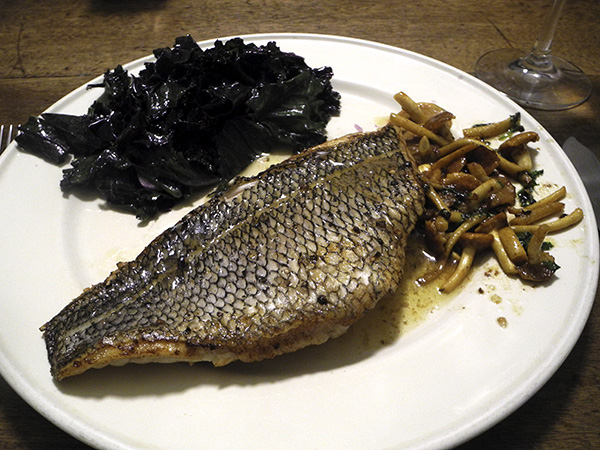
I’m still not used to my forays with some of the finer kinds of white fish ending up as splendidly as lately they sometimes have. This was one of the very best.
It all started in the Union Square Greenmarket, as always.
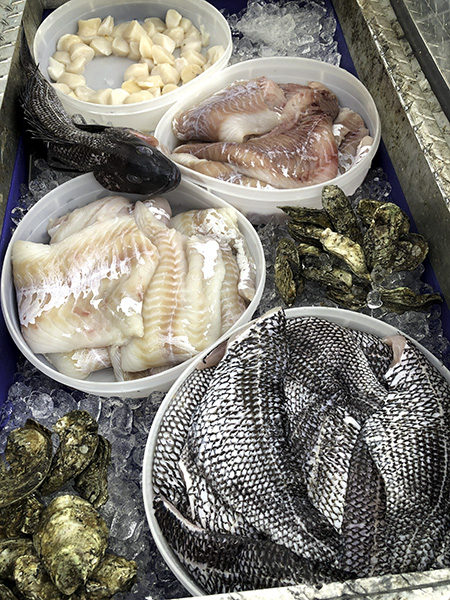
That image is of only one of the 3 or 4 reservoirs of iced seafood that I faced when I arrived.
I through up my hands looking in frustration looking at the huge variety, so I texted Barry a list of just some of what was at the fish monger’s stall that morning, and asked, “skatefish, monkfish, tuna, swordfish, small bluefish, scallops, pollock, cod, black sea bass, squid, lemon sole, or flounder?”
He decided on the bass.
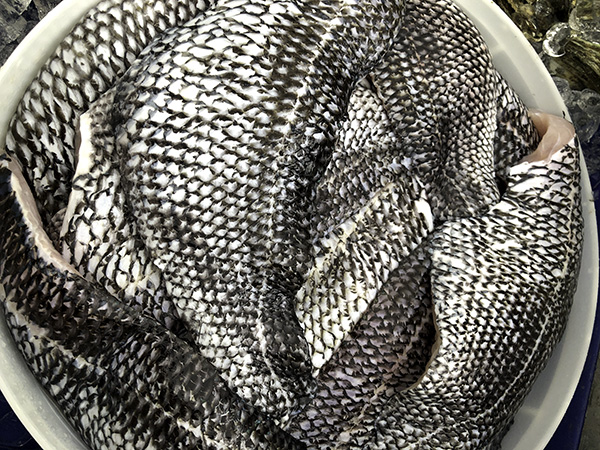
I also picked up some of the most beautiful mushrooms and kale I had ever seen.


- two 8-ounce Black Sea Bass fillets from Pura Vida Seafood Company, washed, dried, seasoned on both sides with sea salt and freshly ground black pepper, sautéed for 2 to 3 minutes over a fairly brisk flame with butter and a little olive oil inside a large, vintage thick-copper oval long-handled pan, skin side down, then turned over and the other side cooked for about the same length of time, removed when done and arranged on 2 warm plates (I had them inside the oven, set to its lowest temperature), otherwise covered at least a little to retain their warmth, then, with 2 tablespoons of butter added to the pan, 4 ounces of chestnut mushrooms [“Chestnut mushrooms are the mushroom everyone wants, they just don’t know it yet.“] from Ramble Creek Farm‘s stall in the Union Square Greenmarket, that had been cut up, mostly just into 2 pieces (just detaching the lobes from the stems), sautéed, stirring, until lightly cooked, seasoned with sea salt, freshly-ground black pepper, adding a pinch each of 2 crushed dried peppers, one hot and one with no heat whatsoever (hickory smoked Jamaican Scotch bonnet from Eckerton Hill Farm, and home dried habanada pepper), a couple tablespoons of chopped parsley from Phillips Farms, and a tablespoon and a half of the juice of an organic Whole Foods Market lemon, the mushrooms stirred some more, everything in the pan then spooned onto the plates at one end of the fish (the skin of the bass is too beautiful to cover up)
- some 5 ounces of purple winterbor kale from from Central Valley Farm, the leaves stripped from their stems, washed in several changes of water, chopped roughly, wilted in a little with olive oil in which 2 garlic cloves from Chelsea’s 8th Avenue Foragers Market, flattened then sliced in half, were allowed to heat until pungent, the greens seasoned with salt, black pepper, and a drizzle of fresh olive oil
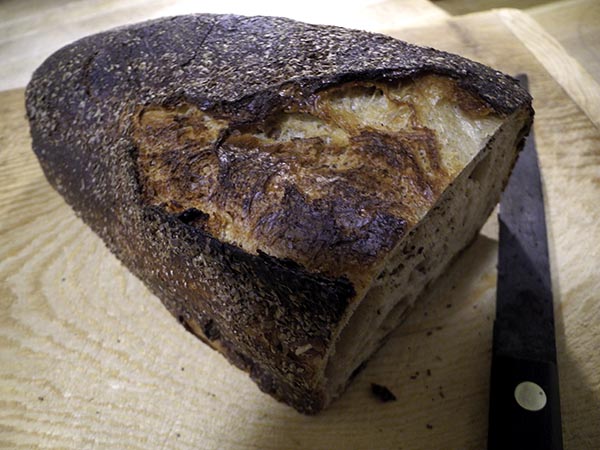
- there was otherwise no reason to include bread in this meal, but near the end of the meal the juices, mostly from the mushrooms, that hadn’t been soaked up by the fish, were asking for it, and I don’t need any excuse for the chance to enjoy a slice of my current favorite bread, ‘Pane da Tavola’, from Lost Bread Co.
- the wine was a French (Burgundy/Macon) white, Domaine Michel Barraud, Macon-Villages ‘Les Pierres’ 2016, from Flatiron Wines
- the music was the album, ‘Night Songs’, by Helen Grimes
